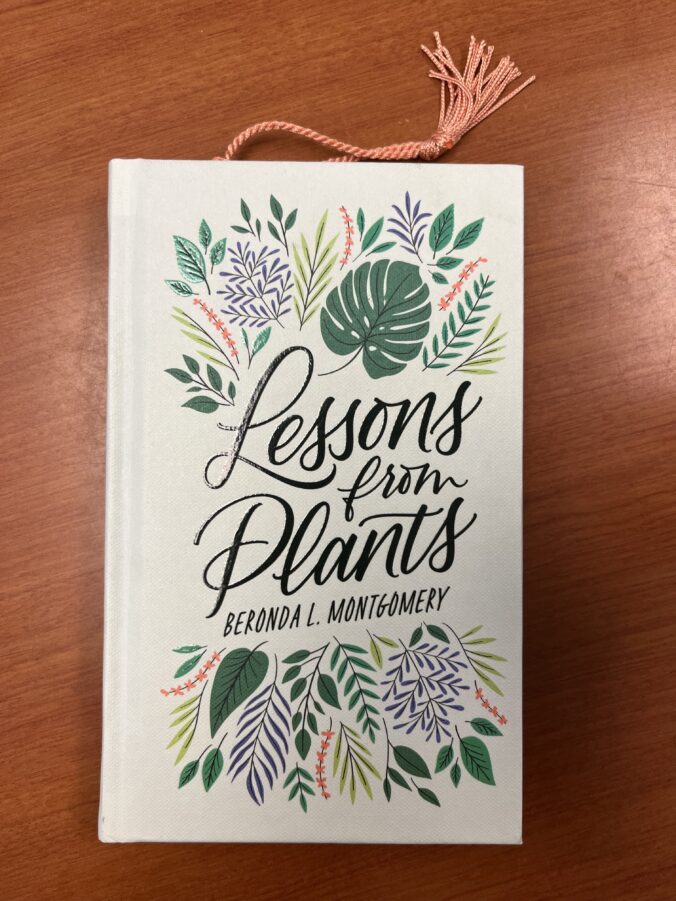As I mentioned in last week’s post, right now at SK, in the spring quarter of the school year, many classes’ projects involve explorations of the natural world: habitats, ecosystems, species, plants, soil, and trees. With a project-based approach, these explorations are inquiry-driven, cross-disciplinary, and multidimensional. Rather than teaching concepts in isolation, teachers and students co-construct meaningful contexts through in-class and outdoor experiences, excursions, and master classes; students deepen their learning by making connections, recognizing and analyzing relationships, and applying their knowledge to new situations.
Relatedly, in her book, Lessons from Plants (2021), Dr. Beronda L. Montgomery provides an accessible, scientific explanation of how plants “know” what and who they are, which drives their biology (or, one could argue, their biology drives their ways of knowing). But this text is not just a book about plants.
Montgomery dispels myths about plants’ intelligence – they are not merely organisms that adapt to the conditions in which they find themselves. “[…] plants don’t just function within their environment: they actively participate in and transform it (p. 91).” She draws parallels between how plants function as integral parts of (and participants in) larger systems and how we can, as human beings, not only function more optimally within the systems where we find ourselves but also transform those systems into healthier environments.
We have the capacity to both adapt to and change our environments.
In particular, the roots of a plant have a specific and important purpose in sustaining a plant and transforming its environment.
“Roots play an important role in succession because of their influence on plant establishment and their transformative properties. Underground, just below our feet, roots are exerting control on soil properties and thus, on entire ecosystems. A plant’s health is determined in large part by the activity and function of its roots. We can gauge a plant’s health by its ability to form blossoms and fruit, but it is the roots that provide the necessary nutrients for reproduction (p. 84).”
The soil and the roots – some of the most essential parts of a plant’s health and environment – are underground, often hidden from sight. Although we don’t often see (or even think about) what’s below the surface, it matters.
SK students are learning about the importance of the entire system in which we, as humans, live and in which all living beings live. Our care for one another, for all living things, must extend well beyond what we can see easily with the naked eye. As stewards of our environments – physical, social, and emotional – we must always consider what lies beneath the surface as essential to who we are as well as who we must become to take part in the world we are creating.
